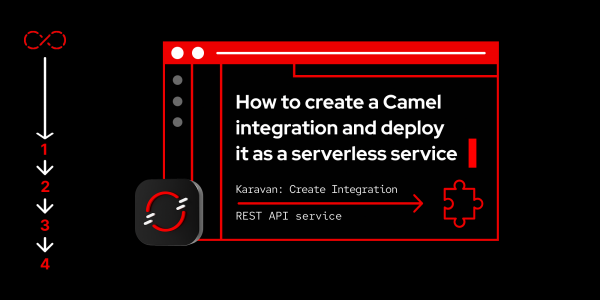Overview: How to create a Camel integration and deploy it as a serverless service
This learning path is a step-by-step guide to creating an Apache Camel integration and deploying it as a Knative serverless service (close to low-code/no-code) using the community edition of the Visual Studio Code (VS Code) extension Karavan.
Prerequisites
- A Developer Sandbox account
- A workspace in Red Hat OpenShift Dev Spaces
- Developer Sandbox
- Apache Camel
- Visual Studio Code extension called Karavan
What you’ll be doing
In this learning path, you will:
- Access your Developer Sandbox
- Launch a new workspace
- Execute a command
- Create a Camel integration route
- Create a REST API
- Test your API
- Deploy to OpenShift
How long will this learning path take?
- Around 75-90 minutes

